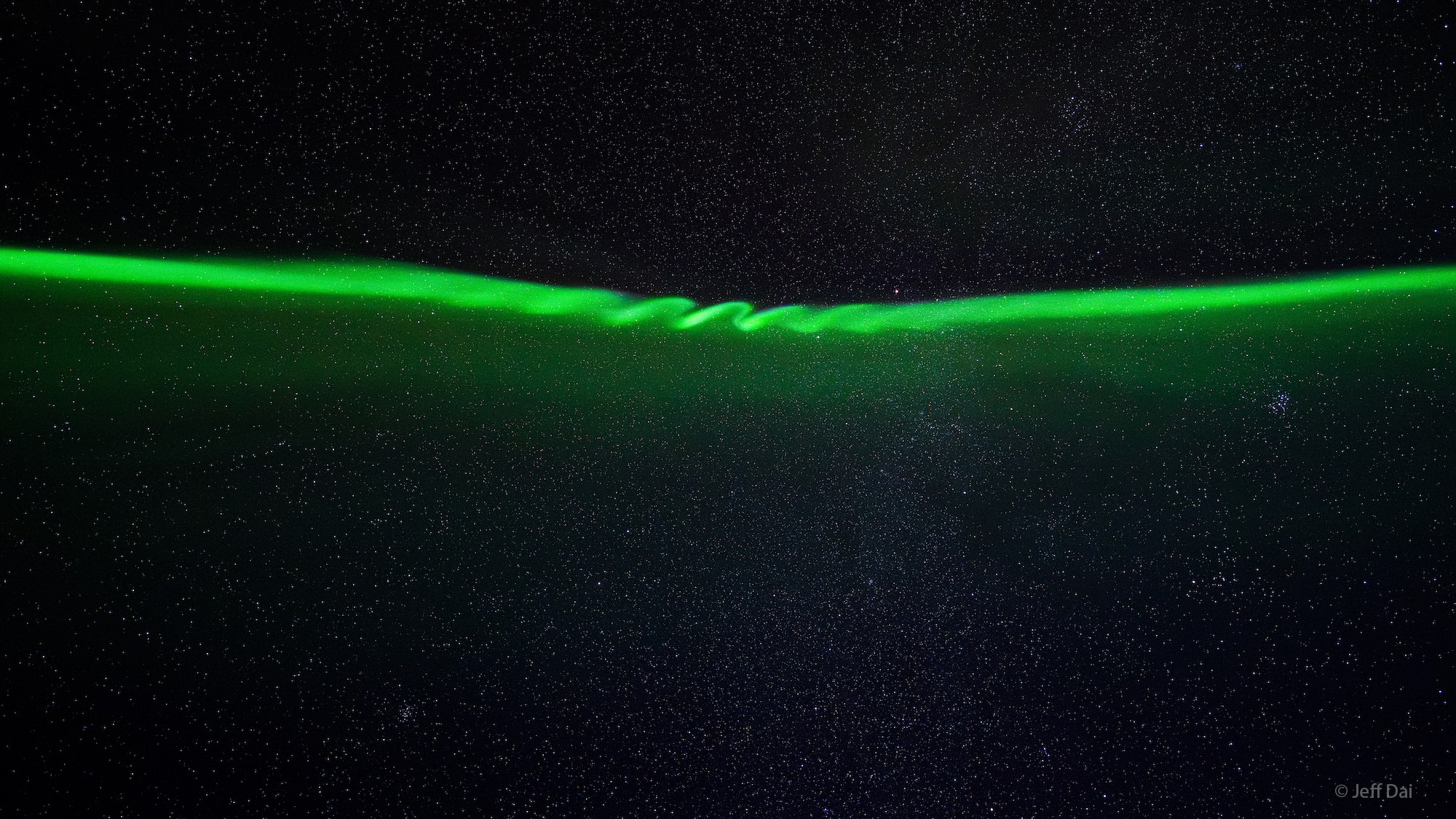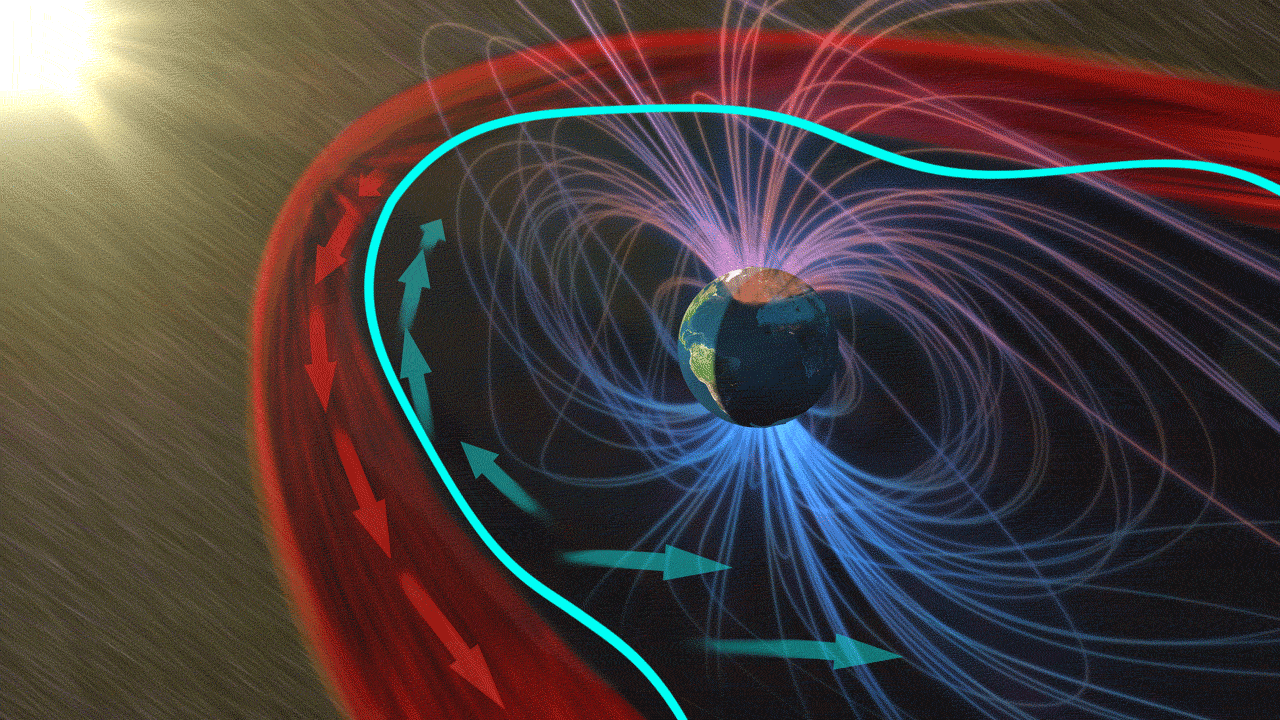Watch extremely rare 'aurora curls' ripple through the northern lights (video)
The rare aurora phenomenon was captured by astrophotographer Jeff Dai.

Astrophotographer Jeff Dai, captured a remarkably rare sight while watching the northern lights on Jan.16, above Kerid Crater, south Iceland.
The rippling green aurora curls dancing overhead result from large waves traveling through Earth's magnetic field, causing our magnetosphere to "ring like a bell", according to Spaceweather.com.
"Imagine that Earth's magnetic field is like a guitar string," Xing-Yu Li, a ULF wave expert at Peking University in Beijing, China, told Dai, as reported on Spaceweather.com. In this image, "we are seeing vibrations in that string." Li estimates that their wavelength is several kilometers.
Related: Where to see the northern lights — 2024 aurora borealis guide
What makes this scene so special is that normally such pulsations are only visible to highly sensitive magnetic instruments, where they're recorded as squiggly lines on a chart recorder.
But in this rare instance, the energetic particles flowed down Earth's rippling geomagnetic field, triggering a bright aurora light show that illuminated the wave across the star-studded sky.
"They rippled across the zenith for several minutes.", Dai wrote on Instagram.
Breaking space news, the latest updates on rocket launches, skywatching events and more!
Auroras are created when energized particles from the sun's solar wind are deflected towards Earth's poles by our planet's magnetic field. The energized particles then interact with atoms and molecules in our atmosphere, depositing energy, causing our atmosphere to fluoresce. The different aurora colors are dictated by the chemical composition of Earth's atmosphere.
Related: Aurora colors — What causes them and why do they vary?
"Auroras tell us many things about Earth's upper atmosphere, including its density, composition, flow speeds, and the strength of electrical currents flowing in the upper atmosphere." Space physicist Elizabeth MacDonald told Space.com. "These in turn tell us about the Earth's magnetic field, how it extends into space, and how it changes dynamically" MacDonald continued.
Aurora displays have been particularly impressive in recent years owing to heightened solar activity. We can expect more dazzling shows as the sun builds towards a peak in its 11-year solar activity cycle, expected to occur in 2024.

Daisy Dobrijevic joined Space.com in February 2022 having previously worked for our sister publication All About Space magazine as a staff writer. Before joining us, Daisy completed an editorial internship with the BBC Sky at Night Magazine and worked at the National Space Centre in Leicester, U.K., where she enjoyed communicating space science to the public. In 2021, Daisy completed a PhD in plant physiology and also holds a Master's in Environmental Science, she is currently based in Nottingham, U.K. Daisy is passionate about all things space, with a penchant for solar activity and space weather. She has a strong interest in astrotourism and loves nothing more than a good northern lights chase!


